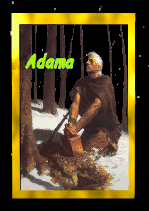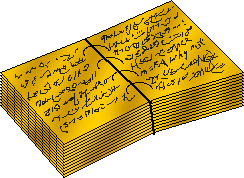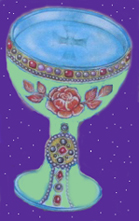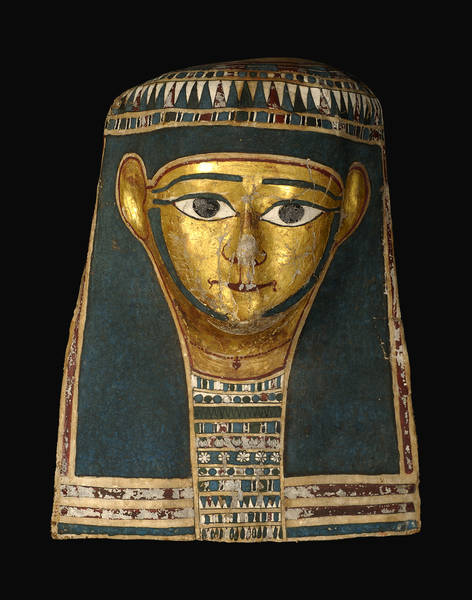
Forum encyclopédique d'histoire des Mormonismes et de la Franc-Maçonnerie & archéologie - sciences - aéronautique - paranormal - ufologie- orbs - ésotérisme - symbolisme
|
|
| | THE SAGA OF THE BOOK OF ABRAHAM (extracted of this book) |  |
| | | Auteur | Message |
|---|
Commandeur Adama
Magister Ordo Kolob - Admin

Nombre de messages : 8905
Age : 60
Localisation : Pays de Néphi - Mormon forest
Date d'inscription : 16/02/2007
Chevalier de Kolob - Vers la Sagesse
 A reçu la Lumière: 180 A reçu la Lumière: 180
 En quête du Vase Précieux et Elu: En quête du Vase Précieux et Elu:
    (150/200) (150/200)
 A la recherche du couple de Licornes du Jardin d'Eden: A la recherche du couple de Licornes du Jardin d'Eden:
    (7/700) (7/700)
 |  Sujet: THE SAGA OF THE BOOK OF ABRAHAM (extracted of this book) Sujet: THE SAGA OF THE BOOK OF ABRAHAM (extracted of this book)  Sam 1 Déc - 13:25 Sam 1 Déc - 13:25 | |
|  The Colossi of Memmon, overlooking the Necropolis at Thebes. Identification of the Tomb Since the earliest accounts of their unearthment, members of the Church have envisioned the place and thé tomb wherein Lebolo acquired his mummies, which in turn contained thé papyri scrolls. Oliver Cowdery's 1835 Messenqer and Advocate account said thé mummies were taken "from one of thé catacombs of Egypt, near thé place where once stood thé renowned city ofThebes. . . ." Dawson has been able to define thé identification even more: "Whiist at Thebes in 1818, Lebolo discovered a pittomb at Gerneh containing a number of mummies of Ptolemaic date." Gurneh, or El Gurneh (aiso Journah, Gournah, Qurneh, Gurnah, Gernah, EI-Qurna, and sometimes Kurneh), is thé name given by modem Arabs to a small village on thé west bank of thé river Nile and north of Thebes. Thus, El Gurneh is a section of the area previousiy known as the Necropolis, or city of the dead, which made up the western side of Thebes. Thebes is a famous ancient Egyptian city on the banks of the Nile, some 350 miles south of Cairo, whose ruins are among the most magnificent in the worid. lt is near the modem towns of Karnak and Luxor. The Temple of Karnak, with its avenue of sphinxes on thé east bank of thé river, and thé Tombs of thé Kings, hewn into solid rocks of thé hillside on thé west bank of thé Nile, combine to make Thebes a gréât tourist attraction. Thebes was once a gréât sprawling "city of thé living," and thé Necropolis or "city of thé dead," with its royal tombs and tombs of noblemen, or private tombs, was across thé river westward. In biblical history, Thebes was known as No. Of interest to some will be thé following two références to No (Thebes) that are found inJeremiah and Nahum: The daughter of Egypt shall be confounded; she shall be delivered into thé hand of thé people of thé north. The Lord of hosts, thé God of Israël, saith: Behold, l will punish the multitude of No, and Pharaoh, and Egypt, with their gods, and their kings, even Pharaoh, and ail them that put trust in hirn: And l will deliver them into thé hand of those that seek their lives, and into thé hand of Nebuchadnezzar king of Babylon, and into thé hand of his servants: and afterward it shall be inhabited, as in thé days of old, saith thé Lord. (Jer. 46:24-26.) Art thou better than populous No, that was situate among thé rivers, that had thé waters round about it, whose rampart was thé sea, and her wall was frorn thé sea? Ethiopia and Egypt were her strength, and it was infinité; Put and Lublum were thy helpers. Yet was she carried away, she went into captivity: her young chiidren aiso were dashed in pièces at thé top of ail thé streets: and they cast lots for her honourable men, and ail her gréât men were bound in chains. (Na. 3:8-10.) The Bible records both the predicted fate and thé eventual history of Thebes, which in our time bas gained renewed famé as a resuit of thé 1922 discovery of thé tomb ofKing Tutankhamen (Tut) and its gréât weaith ofjewels and objects of art. At any event, Oliver Cowdery mentioned Thebes as the site where thé mummies were unearthed. But his account gave more information concerning thé location of thé mummies: There were several hundred mummies in thé same catacomb: about one hundred embalmed after thé first order, and deposited and placed in niches, and two or three hundred after thé second and third order, and laid upon thé floor or bottom of thé grand cavity, thé two last orders of embalmed were so decayed that they could not be removed, and oniy eleven of thé first, found in niches. Of prime importance is thé information that thé catacomb was a "grand cavity," and that there were "niches" in it. With this information frorn Oliver Cowdery, and Warren R. Dawson's information that thé site of Lebolo's pit-tomb was at Gurneh, it was oniy a matter of time before an alert Latter-day Saint scholar would attempt to identify Lebolo's pit-tomb, or see if identification could be made. Thé scholar was Dr. Ross T. Christensen, associ- ate professor of anthropology and archaeology at Brigham Young University, and thé time was 1960. Dr. Christensen, long interested in thé archaeology of thé scriptures and a constant support to students interested in thé archaeological aspects of religions history, tells his own story: As l recall, l was doing research in 1960 and 1961 on Thebes for a paper l was to présent at thé 13th Annual Symposium of Archaeology of thé Scriptures. In my work, l came across a book titled Topographical Bibliography of Ancient E~yptian Hieroglyphic Texts, Reliefs, and Paiîitings. Thé volumes were by two British female scholars, both highiy reputed, who were named Bertha Porter and Rosalind L. B. Moss. They in tum had taken their information on thé matter from Duemichen, a nineteenth century German Egyptologist of note. Volume one, titled Thé Theban Necropolls, was a storehouse of information. The book had the ground plans of what we call thé private tombs of noblemen. Frorn thé information given by Dawson, that Lebolo's discovery was a pit-tomb—one under thé surface of thé ground—and that it had some Ptolemaic mummies in it, l thought that thé tomb in which Lebolo found thé mummies would hâve been a private tomb, not a tomb of a Pharoah, and would be presented by the authors. So of ail those presented, l simply picked out thé largest tomb to study. It was thé tomb of Petamenpet, a nobleman of thé twentysixth or Sait dynasty, and called by Egyptians today, Tomb 33. l aiso noticed that it seemed to hâve a number of recesses in it, which l figured could be thé "niches" Oliver Cowdery referred to. As l counted the niches, there seemed to be sufficient to hold the 100 embalmed mummies that Oliver reported were in thèse niches. Then as l began to compare this ground plan with other ground plans) it appeared to me that Tomb 33 could be the tomb Lebolo discovered. It certainly was at Gurneh, it was right in thé area of thé pit-tombs, and it seemed to be thé oniy one with a "grand cavity" big enough to hold a total of three or four hundred mummies, two or three hundred of which were in the second and third order. Aiso, thé présence of thé recesses or "niches" in the side, sufficient and big enough to house about 100 mummies of thé first order, was another factor. Tomb 33 seemed to be thé oniy one that fit thé description. A great number of the ground plans had no "niches" at ail, and some of the ground plans did not seem big enough to house three or four hundred mummies. Thus, it was by a process of élimination that l concluded with rny hypothesis that Tomb 33 could be thé tomb in which Lebolo found his mummies. Question: Would not thé Egyptian government hâve records of ail thé original excavations? One must remember that Egypt was not controlling her own land during much of thé nineteenth century, and during much of thé period of excavations, thé governrnents of Turkey, France, and Britain were involved. l strongly doubt that one could learn from thé Egyptian records information 'that would not be available to him in any large library. Now, l suppose l hâve been recognized by some as thé discoverer of Lebolo's tomb, but let me assure ail interested parties that this conclusion is based oniy from a study of published sources, a study accomplished far away from thé actual site of thé tomb. Thé conclusion is oniy a possibility, albeit a rather good one at présent. This assumption does not dépend upon any personal field work. After forming this hypothesis involving Tomb 33, l gave various talks on thé subject, and Dr. Lynn Hilton heard me and informed me that he would hâve thé opportunity to visit Egypt, and we sat down and analyzed thé records again in order to fully apprise him of ail relevant information. | |
|   | | Commandeur Adama
Magister Ordo Kolob - Admin

Nombre de messages : 8905
Age : 60
Localisation : Pays de Néphi - Mormon forest
Date d'inscription : 16/02/2007
Chevalier de Kolob - Vers la Sagesse
 A reçu la Lumière: 180 A reçu la Lumière: 180
 En quête du Vase Précieux et Elu: En quête du Vase Précieux et Elu:
    (150/200) (150/200)
 A la recherche du couple de Licornes du Jardin d'Eden: A la recherche du couple de Licornes du Jardin d'Eden:
    (7/700) (7/700)
 |  Sujet: Re: THE SAGA OF THE BOOK OF ABRAHAM (extracted of this book) Sujet: Re: THE SAGA OF THE BOOK OF ABRAHAM (extracted of this book)  Sam 1 Déc - 13:32 Sam 1 Déc - 13:32 | |
|  Thebes, temple of Luxor. Within a matter of months of his interview with Dr. Christensen, Dr. Hilton was in Egypt with a BYU Travel Studies tour and was able to make a first-hand inspection of Tomb 33. However, before entering Tomb 33 with Dr. Hilton, readers should be apprised of thé nature of a pittomb. A pit-tomb is an underground burial chamber carved from solid rock. They are found in gréât numbers at thé Necropolis at Thebes. Some are called "private tombs," or thé "tombs of thé nobles," to distinguish them from thé royal tombs in thé nearby Valley of thé Kings, and, according to Dr. Christensen, "each has been labeled by thé Egyptian government with a nuinber placed at thé entrance." Hence, the name Tomb 33. Here, then, is Dr. Hilton's story, with an aside that readers should find interesting: As assistant dean of adult éducation, l had occasion to plan a trip for adults who were going to visit Luxor. Since ail thé adults were Latter-day Saints, l contacted Dr. Ross Christensen and asked him about his hypothesis concerning thé tomb that Lebolo had excavated in 1818. We exammed a rather large book of floor plans, ail of thé floor plans of known tombs that hâve been found, and l imagine they hâve found nearly ail of them: they hâve been looking for 150 years. As we examined thé plans there was oniy one that seemed to fit thé description Oliver Cowdery gives, and as l recall, it was l) thé largest and 2) thé oniy one wlth niches. Question: "How many pit-tombs in thé area of Gurneh?" "Oh, dozens—but none had niches, and none were big enough to hold three or four hundred mummies. And l suppose that when Lebolo got there, thé mummies were stacked up like cord wood inside, Well, we traveled to Egypt, and as soon as we got to Luxor, we inquired of an archeologist who was with us where Tomb 33 might be. Guess what his reaction was? "You mean you came ail thé way from America to see Tomb 33?" l said, "Yes." "Well, l happen to be one of thé chief government archaeologists. If we knew why you want to see Tomb 33, we might exploit that idea and get other tourists to corne." "Well," l said, "We're Bible scholars." He said, "Well, there are not many Bible ruins around hère, but we certainly hâve plenty of ruins." "Well," l said, "thé fact of thé matter is that we are hère to see if we can find Tomb 33, whence we think came thé papyrus for thé Book of Abraham." He then said that he had prided hirnself on reading everything that had corne frorn thé tombs of Egypt but that he had never heard of thé Book of Abraham. "Well," l said, "l just happen to hâve a copy with me." It was in my little three-in-one. l opened it to Facsimile No. l in Abraham, and you should hâve seen his eyes! He said, "l must read this." So l said) "That's good. l'd like to have your reactions to it." "Ail right," he said, "you go across thé river and see Thebes) and 111 read this. l'm staying at thé same hôtel as you are." Well, we crossed thé river and visited Thebes. When we got back that night his face was as long as a horse. "Now, Hilton," he said, "l don't want to give you offense. " "Oh, go ahead," l said, "tell me what's on your mind." "Well, if you won't take offense, 111 tell you straight oui that this book is thé grossest kind of nonsense." "Oh, hold on," l said. "Thé Lord's prophet translated that. That's a true book. Tread lightiy on it." "Why, Hilton," he said, "you're a fool. Where did you get your doctor's degree?" "From thé University of Chicago," l replied. "Well, that's a good enough school. In Egyptology?" "Well, no. In school administration." Then he laughed. "Well, l read this book. This hieroglyph that says Abraham was in Egypt—your three-year-old son, blindfolded with a crayon, could draw better than that. lt's a nonsense symbol. lt doesn't mean Abraham. lt doesn't mean anything." Well, as we now know, Reuben Hediock hadn't carved it very well in thé first place. Now that thé papyrus from which Facsimile No. l was taken has corne to light, it is interesting to see what Facsimilé No. l really looks like. lt's quite a bit différent from that which is in our Book of Abraham. But at thé time l did not know that. So l asked, "Well, what do you think of this?" "Oh, l've seen lots of pictures like this," he said. "Instead of Abraham tied to thé altar, this is a cadaver—a dead body; instead of thé priest of Pharàoh standing there ready to eut hirn with thé knife) it is an embalmer. He's about to encise thé belly of the deceased and remove thé viscera and put it in those canupial jars." Then he laughed and said, "You know, your Joseph Smith said that these are the gods of Elkenah, Libnah, Mahmackrah, Korash, and Pharàoh. Thèse are not gods—they are canupial jars. Look, you've just been down to Cairo. Didn't you notice that thèse four jars are in association with every mummy? lsn't it true that one of those jars is thé head of a hawk, thé other a jackai, the other a hippopotamus, and thé other," l think he said, "a baboon?" "Well," l said, "it is true that there are canopic jars in association with every mummy, and it is true that thé viscera is put in thèse jars to be sealed with thé mummy." Well, hère l was without a degree in Egyptology, and hère was thé gréât scholarly archaeologist telling me that l was a dead cadaver. Ail l could say was, "Well, look, l got a testimony that this is a true book." "Well, you're a greater fool than l thought you were," he said. "This is a dead body." "Well, look," l said, "across thé river they told us that thé ancient Egyptians depicted life by having one foot above thé other, just as it is in Facsimile No. l. Now, how could a dead cadaver show life? One foot above thé other? Tell me, what does this mean? A hand with fingers outstretched in front of thé face?" "Well," he said, "that means thé symbol of prayer, as folding of hands does to a Christian." "How could a dead person be praying?" l asked. "Indeed, thé man is not dead, he's alive) and he is praying, and that's thé priest of Pharàoh about to offer him up." At that point he gave up, shaking his head, and we parted. We got around to visiting thé tombs, and we asked our bus driver to take us to Tomb 33. The driver said, "No one ever cornes io Tomb 33.1 hâve to get out my road map to find where it is." When we arrived, thé first things l noticed were thé first two roorns. Thé ceilings had caved in. Thé ground surface was a flat plane, just like on a désert) and thé Egyptians had dug down through thé stone and carved a doorway inside and then carved roorns out. There were five or six feet of stone between thé ceiling and thé ground level above. Now what had happened was that thèse ceilings over thé big rooms had apparently fallen in because they did not hâve enough interior support. Thus, we could see thé tops of thé niches—not thé bottoms—because they were covered by thé débris from thé fallen ceiling. Oniy thé first two or three rooms had collapsed. l wanted to go back to where thé ceiling had not collapsed. When we got to that point, after going down through thé débris that had fallen from thé roof, we could see that thé modem Egyptians had eut down through thé débris so that they could get to thé doorway. But thé doorway had a heavy screen or grill locked over it. Down there we could see not oniy thé tops of thé niches) but aiso carefully painted pictures and hieroglyphs around thé upper comices of thé room. And in thé corners where thé ceiling hadn't dropped down entirely—ail of thé corners were in place—protected from thé weather were brightiy colored painted pictures. At thé grilled doorway there was a strong scent of kérosène. We shook thé grill, but it was locked. We looked in and saw many fiftyfive gallon drums of kérosène. Thé government was using thé rooms of thé tomb as a warehouse to store their kérosène. Nearby was a felahlflg, a guard, to protect thé kérosène, l'm sure he wasîi't there to protect anything eise. Well, soon l started to notice on thé sides of thé eut down through thé débris to thé grilled door what l thought was burlap. l observed that it was about 18 inches thick and about seven or eight feet across, and that thé eut had gone right down through this pile of burlap, and thus, thé burlap had a lot of overburden on top of it. But as l picked up what l thought was burlap, it tumed out to be mumrny linen, thousands of years old. My wife began kicking around and found an old bone which was later confirmed as an old human fémur bone. And pretty soon we tumed over part of a skull of a rnummy with parts of thé mumrny wrapping and hair still on it. As we looked around, we found a human clavicle and other bits and pièces of things. Well, l was satisfied. l honestly believe that we were thé first Latter-day Saints who had corne to that tomb knowing what we were looking at. And l thought to myself, if l were Lebolo, and if there were three or four hundred mummies of thé various orders which were partty decomposed, and if l oniy found 11 good mummies, l would take those 11 good mummies—which Lebolo did—but î would not discard those other three or four hundred mummies. What would l do? l would unwind them and look for treasure. And what would thé remains be? Well, there would be a skull over there, and a fémur bone over hère, and so on. And in fact there would be a lot more. There would be a pile of murnmy wrappings 18 inches thick, ten feet or so across, which is exactiy what we found. Gan you imagine Lebolo's servants, pulling off mummy wrappings, hour after hour? There must hâve been a tremendousstackof mummy wrappings, and then when thé roof caved in on it, thé pile would be crushed to its présent dimensions, l think we were thé first Latter-day Saints to see what had happened. That was really something. Now l honestly believe that we were at thé same place that thé Prophet Joseph's four mummies came from. Our visit was during thé summer of 1961. l suppose if you went back and did thé research ail over again, you would corne to thé sarne place that we did—Tomb 33. And if you went there today, you would find a lot more bones. l've been back four times, and hâve never been able to get beyond thé grill, but it doesn't matter, because from thé floor plans that Dr. Christensen has, we can tell that there are oniy small rooms beyond and none of them hâve niches in them.  33). Wall painting in the Tomb of Seti I, the second king of the 19th Dynasty, son of Ramesses I and Queen Sitre, Valley of the Kings, Thebes. (1970) Picture Alistair Duncan (c) Dorling Kindersley | |
|   | | Commandeur Adama
Magister Ordo Kolob - Admin

Nombre de messages : 8905
Age : 60
Localisation : Pays de Néphi - Mormon forest
Date d'inscription : 16/02/2007
Chevalier de Kolob - Vers la Sagesse
 A reçu la Lumière: 180 A reçu la Lumière: 180
 En quête du Vase Précieux et Elu: En quête du Vase Précieux et Elu:
    (150/200) (150/200)
 A la recherche du couple de Licornes du Jardin d'Eden: A la recherche du couple de Licornes du Jardin d'Eden:
    (7/700) (7/700)
 |  Sujet: Re: THE SAGA OF THE BOOK OF ABRAHAM (extracted of this book) Sujet: Re: THE SAGA OF THE BOOK OF ABRAHAM (extracted of this book)  Sam 1 Déc - 13:47 Sam 1 Déc - 13:47 | |
|  Valley of the tombs of the Kings, Temple of Hatchepsout Exciting as the notion is that Tomb 33 is the one Lebolo found, one would do well to recall Dr. Christensen's own words, "This conclusion is oniy a possibility. . . ." Future research will undoubtediy further confirm or reject thé idea. At the time of Dr. Hilton's visit to Tomb 33, thé récent rediscovery at thé New York Metropolitan Muséum of Art had not been made, but thé document accompanying thé papyri signed by Emma Smith Bidamon reports a confirming idea: "This {sic] Mummies were obtained from thé catacoms {sic] of Egypt sixty feet below thé surface of thé Earth." Thus, if it is true that thé mummies acquired by thé Prophet were some of those found by Antonio Lebolo, this report of Emma's confirms Warren R. Dawson's claim that Lebolo found a pit-tomb. Tomb 33 reportediy fits this général description of being about 60 feet beneath thé surface of thé earth. Contemplating tht report of Dr. Hilton, one wonders if thé figures reported by Oliver Cowdery concerning Lebolo's servants pertain to thé excavation of his Gurneh pit-tomb, or to other work also. Dr. Hilton's envisioning of thé servants unwrapping mummy after mummy in search of something of value is probably a good one. Concerning the labor of thé servants, Oliver Cowdery wrote, "Lebolo . . . employed 433 men four months and two days, (if l understand correctiy, Egyptian or Turkish soldiers,) at from four to six cents per diem, each man. . . ." It is interesting to note thé calculations of those figures: Assuming thé maximum of 31 days to a month, muitiplied by four months, plus two days, the sum equals 126 days; six cents a day for 126 days of labor equals 17.56 that an individual soldier or worker would have reccived. If he received oniy four cents daily, his total would hâve been $5.04; multiplying both figures by thé 433 men employed, a low figure of $2,182.32 is determined, and a high figure of $3,273.48. This may well hâve been thé outof-pocket cost (1818-1823 dollar value) of acquiring thé mummies and papyri from which came Facsimiles Nos. l, 2, and 3 in thé Book of Abraham. Emma's document is again usefui at this point. She says that thé "mummies were obtained . . . by the antiquarian society of Paris. . . ." Perhaps thé Antiquarian Society of Paris sponsored Drovetti, thé agent for whom Lebolo worked, and if Emma's report is accurate, it would appear that thé Society paid thé wages and expenses and, of course, had a hand in directing thé disposition of any finds. But perhaps thé Society did not finance thé digging, oniy purchasing some of thé mummies at a later date. Whatever, thé due is a valuable and potentially productive one. Researchers need to review thé records of thé Antiquarian Society of Paris for information about work originating at Gurneh during thé years in question. Aiso, thé due could conceivably settle thé long unresolved supposed uncle-nephew rdationship of Lebolo and Chand1er. It is a good new lead. Ptolemaic Mummies in Lebolo's Pit-tomb Before departing Egypt with thé mummies en route to ports unknown, a very important aspect concerning Lebolo's find needs explanation. Warren R. Dawson, in his Who Was Who in EgyptoiQ~y,, reports that Lebolo found "a number of Ptolemaic mummies in a pit-tomb at Gurneh." As most students of history know, thé Ptolemy family, thé name of a line of Graeco-Egyptian kings, ruied Egypt from thé death of Alexander thé Gréât at 323 B.C. until thé Roman subjugation of Egypt in 31 B.G. Thé family is intimately connected in thé rise of Alexandria to a great commerclal and scholastic colony, and joins with thé various Cleopatras to make thé name an illustrious one. Knowing this, one naturally wonders how mummies placed in a tomb at this late date could be connected with scrolls reportediy connected somehow with Abraham. A brief account of Egyptian history, oniy as it relates to burials—and reburials—will explain the "Ptolemaic" référence. Several accounts in Genesis mention Egyptian embalming: says that thé "rnummies were obtained . . . by thé antiquarian society of Paris. . . ." Perhaps thé Antiquarian Society of Paris sponsored Drovetti, thé agent for whom Lebolo worked, and if Emma's report is accurate, it would appear that thé Society paid thé wages and expenses and, of course, had a hand in directing thé disposition of any finds. But perhaps thé Society did not finance thé digging, oniy purchasing some of thé mummies at a later date. Whatever, thé due is a valuable and potentially productive one. Researchers need to review thé records of thé Antiquarian Society of Paris for information about work originating at Gurneh during thé years in question. Aiso, thé due could conceivably settle thé long unresolved supposed uncle-nephew relationship of Lebolo and Chand1er. It is a good new lead. Extract : The saga of the Book of Abraham, by Jay M. Todd, Deseret news press. 1969.  Ptolemaic mummie.  PTOLEMAIC MUMMY CASE 10). Close-up of a granite mummy case, from the Ptolemaic era, showing hieroglyphics, on display in the Egyptian Museum, Cairo. (1970). Picture Alistair Duncan (c) Dorling Kindersley  Valley of the tombs of the Kings. Tutankhamon  Trone of Tuthankhamon  Karnak temple : Detail of a column
Dernière édition par le Sam 1 Déc - 13:51, édité 1 fois | |
|   | | Commandeur Adama
Magister Ordo Kolob - Admin

Nombre de messages : 8905
Age : 60
Localisation : Pays de Néphi - Mormon forest
Date d'inscription : 16/02/2007
Chevalier de Kolob - Vers la Sagesse
 A reçu la Lumière: 180 A reçu la Lumière: 180
 En quête du Vase Précieux et Elu: En quête du Vase Précieux et Elu:
    (150/200) (150/200)
 A la recherche du couple de Licornes du Jardin d'Eden: A la recherche du couple de Licornes du Jardin d'Eden:
    (7/700) (7/700)
 |  Sujet: Re: THE SAGA OF THE BOOK OF ABRAHAM (extracted of this book) Sujet: Re: THE SAGA OF THE BOOK OF ABRAHAM (extracted of this book)  Sam 1 Déc - 13:49 Sam 1 Déc - 13:49 | |
|  The very mysterious and attractive hypocpehalus, celestial and theological chart, and advance towards with the surnaturel world for for the antiques Egyptians. | |
|   | | Contenu sponsorisé
 |  Sujet: Re: THE SAGA OF THE BOOK OF ABRAHAM (extracted of this book) Sujet: Re: THE SAGA OF THE BOOK OF ABRAHAM (extracted of this book)  | |
| |
|   | | | | THE SAGA OF THE BOOK OF ABRAHAM (extracted of this book) |  |
|
| | Permission de ce forum: | Vous ne pouvez pas répondre aux sujets dans ce forum
| |
| |
| |
|

